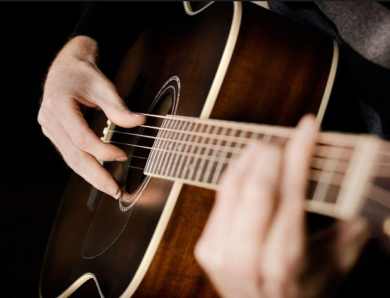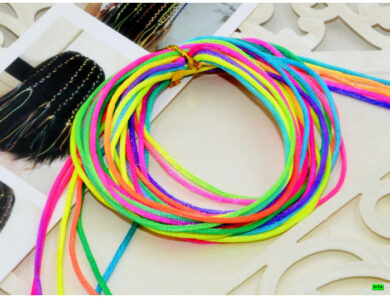Shut-off valve. Types and benefits. Replacement of valves
This type of shut-off valve is made in the form of a valve. The locking element moves parallel to the flow direction passing through the pipes of the medium. Unlike the shut-off and control device, the shut-off valve can only be in the two extreme positions "open" or "closed". Use of such sanitary fittings provides reliable sealing of a closing design.
Shut-off valves are installed on the pipelines to block the movement of the working medium
Types and benefits
These products are classified according to several criteria.
Depending on the method of installation in the system shut-off valves are divided into:
Couplings. Designed exclusively for threaded mounting. Therefore end faces of the shut-off valve of the coupling are issued under an internal or external carving. Shut-off valves of this type are made of brass or steel. In the first case, it is used only in domestic pipelines. And brass, and steel valves are installed in the mains with low pressure of the working environment - to 15,792 atmosphere (1,6 MPa). There is another design of such plumbing fixtures. So, today it is possible to buy the brass shut-off valve muftovy under installation on carving crimp fittings;
Flange. The case of a flange detail is made of steel or cast iron. Its installation is performed according to a completely different scheme. The main ends of the body of this valve end in flanges. This design is stronger. Therefore, the priority area of application of the flanged shut-off valve is engineering communications with a medium level of pressure. 10 MPa. This feature allows you to use these devices in industrial and municipal pipelines. Flange mounting on pipes with a diameter is practiced 10 ? D ? 1600 mm.
The design of the ends is not the only difference between the above types of shut-off valves. The flange valve is much more in comparison with the coupling analog. In numbers, it looks like this: the size of the flange valve can reach 300 mm, while the dimensional range of couplings ends at the mark 63 mm
The valves differ in the method of connection - threaded, clutch, flange
In addition to these two groups of shut-off parts, there is a third type - valves, the design of which is designed for welded installation. Their main ends are decorated in the form of smooth pipes. Scope of the welded shut-off valve - industrial pipelines, working under pressure more 10 MPa.
Depending on the design of the housing, there are valves:
Angular. Connect two pipes perpendicular to each other. The angular shut-off valve has the following advantages:
- efficiency and simplicity of a design give the chance to operate and repair a product easily.
- compared to the latch - a small building height;
- the overlap of the flow of working media is provided by the low stroke of the crane.
On a side note! Perpendicular arrangement of branch pipes on an entrance and an exit, among other things, allows you to reduce the excessive hydraulic pressure present in the system.
Checkpoints. Such products are mounted on the horizontal or vertical site of the pipeline. The design of the check valve is of two types: bellows (with a high degree of tightness) and stuffing box. Experts point out the disadvantages of this detail:
- high hydraulic resistance;
- quite a lot of weight;
- the complexity of the housing design. This determines the fact, that to facilitate manipulation, the check valve is often equipped with an electric drive;
- large construction dimensions;
- the presence of a zone of stagnation. Rust particles can accumulate there, what, usually, leads to corrosion.
The design of the bellows valve provides a higher degree of tightness, than stuffing devices
The housing of the shut-off check valve has 2 choke, on which the internal or external thread is cut. In the latter case, the coupling is screwed onto the housing, and the bend of the pipeline is mounted its free end. If there is an internal thread on the shut-off valve, the connection to the pipe is made by screwing the theft into the housing of the through-steel or brass shut-off coupling valve.
Direct-flowing. In appearance, the device of this type is similar to a check valve, but longer and much larger in size. Its design is characterized by, that the pipes are located opposite each other. The flow in this shut-off valve is regulated by the transverse movement of the flow element, when the saddle of the device is connected to the boundaries of the through hole. The undoubted advantage of such shut-off valves is the absence of stagnation zones and low hydraulic resistance.
Types of closing elements
Modern industry produces valves with three types of closing elements. Actually, their form is the basis of the common names of these parts:
- cylindrical;
- conical;
- spherical.
Ball valves are a modern design, which is more reliable, than conical models
Cones are slowly losing their former popularity. They were practically replaced by the other two types of shut-off valves. Therefore, the reason was the presence of conical valves with the following disadvantages:
- to control the flow of water it is necessary to apply a significant amount of torque.
- conical stopper due to rapid wear requires constant grinding and fitting.
But valves with cylindrical and spherical locking elements are firmly established in the leading positions of this segment of the plumbing market. This is due to the simplicity of design, which does not provide additional maintenance during operation. However, there are nuances. So, example, the shutter of the cylindrical valve is not pressed close to the seat, due to which a high degree of tightness is not provided. Therefore, it is better to use such devices to regulate the flow on any intermediate segments of the highway, and not for its complete overlap.
The spherical shut-off element of the ball valve has a through hole and is installed in the direct-flow case.
On a side note! In most cases, direct flow valves, equipped with a ball valve, perform the functions of shut-off valves only. Flow control with their help is quite difficult.
Ball valves are most often used to shut off the supply of working fluid, example, on water risers in houses
The water movement is opened by turning the handle to the combination of the longitudinal axes of the housing and the through hole. To block the flow, the through hole must be deployed in the direction, perpendicular to the axis of the housing.
Replacement of valves
Owners of apartments in houses, put into operation more than 15 years ago, often forced to deal not only with the replacement of the valve on the riser, but also an audit of all shut-off valves. Doing such work is not difficult, however, without the presence of metalwork tools (keys, screwdriver, flax) and certain skills are not enough.
All risers are common property, therefore, the management organization must replace their components. However, in practice it is very difficult to get such services from her. Sometimes it is easier to do this work with your own hands.
First, the appropriate shut-off valves are selected. Here you need to listen to the opinion of professionals. Regardless, whether to replace the valve with cold or hot water, they advise to stop the choice on devices of spherical type. The reason lies in their durability and high reliability. And even if such a valve fails, make another replacement will be very easy.
First, than proceed to replace the valve, it is necessary to close the riser. If there is unobstructed access to the basement, you can do it yourself. Otherwise, you will have to write a statement to the management organization.
The difficulty of installing or replacing a shut-off valve depends on the type of pipe and the type of connection
After closing the riser, the water is drained. Dismantling of old shut-off valves must be carried out very carefully, to prevent damage to the pipe and the thread present on it.
Having done that, wind FUM tape or flax on the pipe thread. This will increase the tightness of the joints and eliminate the possibility of dripping, which in the future will inevitably grow into a leak.
Turn the valve on the pipe without haste, so as not to distort it, which can damage the thread. Performing installation, follow the location of the handle of the locking device. It should stay on top. Otherwise it will be very difficult to block the water in the future. You should not pull the nuts either, so that the body of the pipe does not break. Finally, apply a silicone sealant to the joints.




